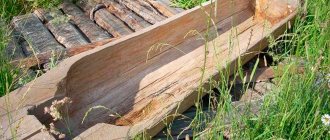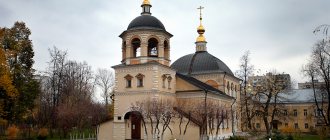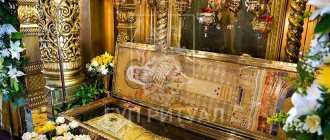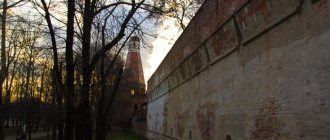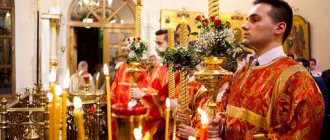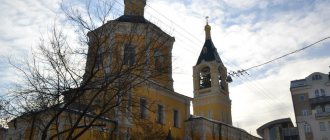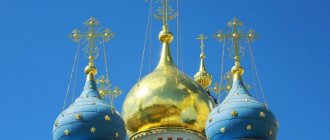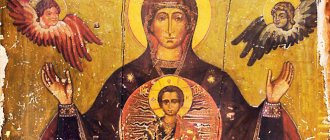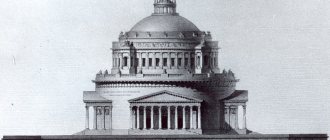Rogozhsky village
Bird's eye view of the Rogozhsky village
Rogozhsky village, or Rogozhskaya Sloboda, is a very unique and unexpected area of Moscow. This is the center of the Russian Orthodox Old Believer Church, the spiritual center of one of the branches of the Old Believers - the priesthood of the Belokrinitsky consent. And all around there is a metropolis: high-rise buildings, an industrial zone, an overpass of the Third Transport Ring. Old Believers have settled here since the 17th century. During the plague epidemic of 1771, all cemeteries within the city were closed, and the dead were buried in mass graves outside the outposts. So, not far from the Rogozhskaya outpost, such a cemetery was created where the Old Believers-priests were buried. After the epidemic, Catherine II, in gratitude to the Old Believers-merchants who did a lot to fight the plague, allowed the construction of two stone churches near the cemetery - a summer one and a winter one. Gradually, an entire Old Believer village formed and grew here with its own special way of life, where, according to the recollections of contemporaries, morals and customs were sharply different from the rest of Moscow.
Temples of Rogozhskaya Sloboda
Initially, after the permission of Catherine II, a temple in the name of the Intercession of the Blessed Virgin Mary or the Intercession Cathedral was erected in Rogozhskaya Sloboda. This is the main cathedral church of the Rogozhsky community. Most Old Believer churches in Rus' were consecrated in the name of the Intercession of the Most Holy Theotokos, since it was believed that it was her patronage that helped the Old Believer church overcome hardships and adversity.
Intercession Cathedral
The temple was built in 1790-1792 by the outstanding Russian architect Matvey Fedorovich Kazakov in the classicism style. During the construction of the temple, it turned out that it was larger in area than the Assumption Cathedral in the Kremlin. Therefore, at the direction of Empress Catherine II, the temple was “shortened”: instead of five domes, they left one on the church, dismantled the altar ledges, and shortened the spire. The interior decoration of the cathedral was impressive: the walls and vaults were painted in the ancient Russian style, the temple was decorated with huge candlesticks, lamps, and chandeliers. The cathedral housed a rich collection of ancient Russian icons from the 13th to 17th centuries.
For two centuries, the Intercession Cathedral was the largest Orthodox church in Moscow, accommodating up to seven thousand believers at a time. Only the construction and reconstruction of the Cathedral of Christ the Savior twice moved it to second place among Christian churches in terms of area. However, we must admit that in terms of spiritual value and prayer, this is certainly one of the most significant churches in the capital and the country as a whole.
To this day, frescoes and icons have been preserved in the Intercession Cathedral in almost their original form, including in the iconostasis there is an icon attributed to the students of Andrei Rublev. The temple also houses hundreds of authentic Orthodox shrines and relics collected over many years. The Intercession Cathedral is illuminated by silver chandeliers from Catherine's times, not converted to electric lighting (!!!). Before the start of the service, the candles on the chandeliers are lit manually (!) using a special wooden ladder on wheels, triangular in shape, similar to a children's slide. And the temple also has wooden, unpainted, cleanly scrubbed floors (the last time I saw this was 20-30 years ago in the countryside)! All this creates some kind of extraordinary, fabulous, and at the same time homely cozy atmosphere.
Next to the summer Intercession Cathedral is the winter Church of the Nativity of Christ
Church of the Nativity
It was built in 1804 according to the design of the architect I.D. Zhukov. In the 1920s, the temple was closed, the dome and rotunda were dismantled. At various times, there was a canteen for workers, factory workshops, a bomb shelter and even a slot machine base for Soyuzattraktsion. It is clear that the interiors have not been preserved. Nowadays services are held here infrequently.
Closer to the Rogozhskoe cemetery there is a temple in the name of St. Nicholas the Wonderworker (Nicholas of Myra at the Rogozhskoe cemetery). On this site, first in 1771, an Old Believer wooden chapel was built, which was later replaced by a temple in the classicist style, and later, in 1864, rebuilt in the pseudo-Russian style. During these same years, a three-tier bell tower was built. During Soviet times, the temple was not closed. Currently, the temple does not belong to the Old Believer community; it is a parish of the same faith, the Russian Orthodox Church of the Moscow Patriarchate.
Temple of St. Nicholas the Wonderworker
The restored temple can be viewed like a painted toy, like a bright fairy-tale fantasy from childhood. There is such a porch on each side of the bell tower...
...the windows are so intricately designed...
... this is how the domes are intricately decorated and this is what the bell tower looks like as a whole
Church of St. Nicholas the Wonderworker with a bell tower
Truly the pearl of the architectural ensemble of Rogozhskaya Sloboda is the bell tower church in the name of the Resurrection of Christ. Majestic and graceful, inexpressibly beautiful and harmonious, with its aspiration to the heavens similar to a spaceship at the start, its silhouette evoking images of ancient Russian churches, the bell tower of Rogozhskaya Sloboda is an undoubted masterpiece of religious architecture, perhaps not so replicated and clearly underestimated from a tourist point of view
In 1856, the tsarist government sealed the altars of the summer and winter churches, and converted the church of St. Nicholas the Wonderworker, built by that time, into a co-religion church. Only in 1905, on the basis of the Tsar’s manifesto on religious tolerance, Rogozhsky churches were opened. It was in memory of the unsealing of the altars of local churches that the bell tower church in the name of the Resurrection of Christ was erected in 1906–1913 (architect F. I. Gornostaev). In 1949, the temple was re-dedicated in the name of the Dormition of the Blessed Virgin Mary, and at the beginning of 2015 - back to its original dedication to the Resurrection of Christ. Initially, during construction, bells weighing 1000, 360 and 200 pounds were installed on the bell tower. In the 1920s they were removed and sent for melting down, and the church was closed. After restoration in 1990, a bell weighing 262 pounds 38 pounds (4293 kg) was raised to the bell tower. This bell, cast in 1910, has been kept in the Moscow Art Theater since the 1930s.
The height of the bell tower is about 80 meters, which is only a meter lower than the Ivan the Great Bell Tower in the Kremlin, above which it was prohibited to build in Moscow for centuries. But, as the guide told us, there is a persistent opinion among Old Believers that the bell tower of the Rogozhsky village is only one brick lower than Ivan the Great, or even lower than the Kremlin bell tower only according to documents, but in fact it is equal or higher. In addition to its extremely harmonious proportions, the bell tower is memorable for its elegant carvings.
The belfry arch is decorated with relief images of a pelican. Previously, it was believed that the pelican fed its chicks with its blood, so it served as a symbol of parental love.
Image of a pelican on a window arch
During the Soviet period, most of the territory of the Rogozhsky village was used for the construction of buildings for a plant of automatic lines and special machines. According to data gleaned from the Internet, in 1995 the Moscow government approved a plan for the reconstruction of the historical and architectural ensemble of Rogozhskaya Sloboda, and in 2011 canceled this plan. I can personally testify that restoration work was carried out here even before 2011, and recently, literally in 2014-15, noticeable changes took place. Compare these two photos. Note the dome of the bell tower
This is just an illustration of the transformation of the temple in recent years: the first photo was taken in 2013, and the second in 2016. The following point is especially noteworthy here. Recently, modern technologies and materials have become widely used in the construction of religious buildings. In particular, church domes are often covered with titanium alloy; an example of this is the Cathedral of Christ the Savior. But the Old Believer community is faithful to the traditions of their ancestors - the domes of the bell tower of the Rogozhsky village were covered with gold leaf. So, driving along the Third Transport Ring, between Nizhegorodskaya Street and Entuziastov Highway, on the outside, pay attention to the uniquely shaped, slender, beautiful bell tower.
Old Believer Fair
From my own experience, I will say that the most interesting time to visit Rogozhskaya Sloboda is on the feast of the Week of the Holy Myrrh-Bearing Women, when an Old Believer fair is held here. You will get a double impression: both from the architectural beauty and from being, I’m not afraid of this comparison, in a different reality. See for yourself. On the day of the fair, a market opens on the territory of the village, where bearded men in blouses trade, and women and girls walk around exclusively in sundresses and headscarves - pay attention to the appearance of the people in this photo and in the following photographs.
At the fair you can buy (or just look at) clothes like this...
... homespun (!!) canvases...
...hand embroidered towels...
… wooden Toys…
...a variety of household utensils...
... and even a cart!
Live geese brought for sale await their fate in the shade
Products from Altai are also widely represented at the fair: honey, herbal infusions and teas, balms, etc.
This holiday is celebrated annually on the second Sunday after Easter, i.e. sometime in May. Besides, again from my experience, the best time to photograph here is in the summer.
If you didn’t make it to the fair, you can take advantage of two year-round shops that are located nearby, on the road to the village from Nizhegorodskaya Street. One shop sells different types of beekeeping products, herbal teas and other products. The other - clothes, shoes, literature, handicrafts and household items like what was presented at the fair. Below I will tell you how to find them.
How to get to Rogozhsky village
Getting to the Rogozhsky village by public transport is somewhat problematic, because there are no metro stations nearby and you need to transfer to ground transport. When visiting the village on a tour several years ago, we traveled from the Marksistskaya metro station by trolleybus. This, by the way, is quite a profitable option, because here you can use several buses and trolleybuses, but it takes a long time to walk. There is much less ground transport from the Aviamotornaya or Ploshchad Ilyich metro stations. The Central Circle opens up favorable prospects for us: several buses and trolleybuses go from the Nizhegorodskaya MCC station, and the ride is much closer, literally the next stop. Both from Marksistkaya and from Nizhegorodskaya, transport goes along Nizhegorodskaya street and you approach the village from the south. This is how to go from the “Modern University” stop if you are coming from the Marksistskaya metro station
This is how to go from the stop “Platform Kalitniki - Staroobryadcheskaya Street” if you are coming from the Nizhegorodskaya MCC station
Below on the map of the Rogozhsky village the South Gate is indicated (marked with the number 18). They are usually closed, the entrance gates are located to the left, which is why the route to them is laid out on the maps above
Scheme of the historical and architectural complex “Rogozhsky village”
On the left, along Staroobryadcheskaya Street, the Holy Gates are marked with number 17 on the diagram. Near them there is a bus stop coming from the Entuziastov Highway, i.e. from the metro station Aviamotornaya or Ploshchad Ilyich. By the way, it is at these gates (inside) that the fair takes place.
There are a lot of parking lots for cars here and, what’s nice, many are free. So, there is parking along Staroobryadcheskaya Street (as it is called on the diagram), also known as Rogozhsky Village Street (on the map). But during the fair, these parking lots are usually occupied. There is a large parking lot at the corner of the Rogozhskoye Cemetery and Staroobryadcheskaya Street, where the number 1 appears on the diagram. In addition, there is parking on the northern side of the Rogozhskoye Cemetery, along Petrovsky Proezd.
On the fence of the village near the gate there are rules stating that the hours for visiting the complex are from 7.00 to 22.00. That is, we can conclude that the gates are locked at night. Also on the territory of the village it is forbidden to smoke, use foul language, be with dogs and other animals, and ride bicycles (except for preschool ones). Strollers are allowed.
IMPORTANT! The following notices hang on the doors of Old Believer churches in the Rogozhsky village:
“Visiting churches by non-Old Believers is possible provided they comply with the rules of dress and behavior adopted in Old Orthodox churches:
Women must wear skirts below the knees, long sleeves and a headscarf. Hats, scarves and makeup are not suitable.
Men must wear trousers and long sleeves. Everyone must wear closed shoes, and for women - without high heels.
Some places of worship, for example, the Divine Liturgy, are required to be performed only among fellow Christians, so visitors will be asked to leave the church for a while. Also, during certain moments of the service it is forbidden to enter and move around the temple, so those unfamiliar with the Old Orthodox charter should stay close to the entrance and not perform any prayer actions.”
From my own experience I will say the following. You can simply walk around the territory of the village without the restrictions described above, i.e. women wear trousers, hats and bare heads, and I have never heard any complaints. They are very loyal to outside visitors to the fair; this is generally the most social event of the community. The only thing is that you still need to exclude very revealing and provocative clothing: bare shoulders and bellies, shorts, Bermuda shorts, etc. for both women and men.
BUT! If you plan to visit temples, then you must strictly comply with all requirements for appearance and behavior. I witnessed how a group of about 20 people were not allowed into the temple because two women were wearing trousers, and judging by the reaction of the guide, this was predictable and inevitable. I would recommend visiting churches when there is no service there - it is more likely that you will not be asked to leave. You have to understand that belonging to another faith will be determined immediately: there are a lot of nuances that are difficult for an outsider to observe, and I think it’s not necessary. If other faiths are allowed into the temple, then we must take advantage of the opportunity and show respect for the people whom we have come to visit and whose shrines we want to see.
In church you should not cross yourself, venerate icons, light candles, etc. Filming is strictly prohibited; it is generally better to put the camera away so as not to attract unnecessary attention. Personally, I stick to the tactic of restrained curiosity. Usually, I first stand at the entrance inside in order to form an image of a respectful visitor among those around me, and to determine the peculiarities of the place where I find myself (for example, it happens that men and women pray in different halves of the temple or the active part of the ritual is going on and it is better to leave). Then slowly, trying not to disturb anyone or violate personal space, I move around the temple in stages. In my experience, the best and most beneficial behavior tactics are peace and respect.
The approximate schedule of services is as follows. The morning service usually starts at 7:30, ends on weekdays around 10:30, and on weekends - around 12 noon. Evening services usually start at 15:30 and last on weekdays until 19:00, and on the eve of holidays and Sundays until 20-21h.
How to get to the shops and refectory of the Rogozhsky village
No matter which public transport stop you go from Nizhegorodskaya Street, you will definitely have to pass under two overpass bridges. As soon as you turn under them, on the opposite side of the passage under the bridges you will see this building
According to the sign on the building it is Rogozhsky village, 35, according to the Yandex map it is Rogozhsky village, 29с9, and on the maps above this building is signed “Cossack hive”. If you go around this building on the right, the first door will be to the refectory of the Rogozhsky village. There are beautiful and tasty pastries here, as well as many other dishes that I have not tried. If you go further, there will be another grocery store, we go around it and around the corner, in the courtyard, we see this tiny shop
Opening hours are approximately as follows: on weekdays from 10:00 to 19:00, on Saturdays from 10:00 to 17:00, on Sundays from 10:00 to 16:00.
Further in the courtyard behind it there is a folk crafts shop, where there are traditional Russian clothes, Cossack uniforms, all kinds of utensils, and souvenirs. Please note that trading here is not carried out in the morning during Sunday and especially revered services, as well as in the evening on the eve of church holidays. In general, opening hours are daily from 10:00 to 18:00.
If you approached or approached the village from the other side, then you need to go beyond it through the gates of the southern part of the village.
Share on Facebook Share
Share on TwitterTweet
Share on Pinterest Share
The church schism became a real drama for the whole country. Many of the adherents of pre-Nikon Orthodoxy went into the forests and reduced their contacts with the outside world to a minimum. But in the cities, the Old Believers also survived, practicing their faith secretly. Moscow was no exception - its own centers of Old Believers formed within its borders.
Church-bell tower in the name of the Resurrection of Christ at the Rogozhskoe cemetery
In 1770–1771, Moscow suffered a great disaster - the plague epidemic. It was now strictly forbidden to bury the dead within the city limits, therefore, by decree of Catherine II, new cemeteries were created outside of Moscow - Vagankovskoye, Pyatnitskoye, Miusskoye and others, now located within the borders of the capital. Among the new cemeteries there were two Old Believers - Rogozhskoe and Preobrazhenskoe. The Empress allowed them to organize quarantines for those entering the capital, provided that they would be supported by private funds, which the rich Old Believers took advantage of. Over time, Rogozhka and Preobrazhenka turned into the largest centers of the Moscow Old Believers, where they built churches, chapels, prayer houses, almshouses, and hospitals. Old Believers began to settle around these places, which led to the emergence of Old Believer villages (which were still habitually called “cemeteries”) with their own way of life. The Rogozhskaya and Preobrazhenskaya communities were able to survive during the persecutions under Nicholas I and even into the Soviet era, despite the loss of some buildings.
The Preobrazhenskoe cemetery was created by the merchant Ilya Kovylin, who rented a vast plot of land in the village of Cherkizovo and, guided by the imperial decree, created a quarantine on it. Soon the Preobrazhenskoe cemetery became the center of the Bespopovtsy-Fedoseevtsy - an Old Believer movement that abandoned the priesthood and most church sacraments. Two courtyards appeared here, called “halves” - male and female. The first church of the community arose on the men's street, built in 1784–1790 in the spirit of pseudo-Gothic and consecrated in the name of the Dormition of the Mother of God. It still stands today, but no longer belongs to the community. In the 1850s, the male half was taken away from the Old Believers and on its basis the St. Nicholas Monastery of Edinoverie was created (in Edinoverie churches and monasteries the old rite was preserved, but they were subordinate to the official Orthodox Church). However, the female half remained with the Bespopovites, who preserved the Old Believer way of life. In documents, this complex, which resembled a monastery with walls and towers, was called the Preobrazhensky Almshouse. Its buildings were erected in their current form in 1805–1811. Prayer rooms were set up in two-story cell buildings, and the Holy Cross Cathedral Church became the center of the entire community. It was not closed in the 20th century, so many ancient icons were preserved in it. The Church of the Exaltation of the Holy Cross differs from the usual image of the Orthodox Church in the absence of an altar from the east, because the Bespopovites do not have priests, so there is no liturgy and, accordingly, an altar is not needed.
Rogozhsky town
Simultaneously with Preobrazhenskoe, the Rogozhskoe cemetery also appeared, where priests - Old Believers accepting the priesthood - began to gather. They located their center near Rogozhskaya Zastava (now this is the area of the Ploshchad Ilyich metro station), where many adherents of the old faith traditionally lived. The first wooden church was consecrated in honor of St. Nicholas the Wonderworker immediately after the founding of the cemetery; five years later it was replaced by a stone building. The “beglopopovtsy” who served here at that time accepted the priesthood established in the official “Nikon” church, but for various reasons passed into the Old Believers. In 1846, the Old Believers-Priests acquired their own hierarchy thanks to Metropolitan Ambrose, the former bishop of the Bosno-Sarajevo diocese of the Patriarchate of Constantinople. He converted to the Old Believers and created his own department in the village of Belaya Krinitsa, located in the possessions of the Austrian Empire (now the Chernivtsi region of Ukraine). This is how the Belokrinitsky hierarchy arose - the basis of today's Russian Orthodox Old Believers Church (ROC).
All R. In the 19th century, the parish of the St. Nicholas Church at the Rogozhskoe cemetery converted to the same faith. But by that time, the Old Believers of the Belokrinitsky consent had two huge cathedrals - the summer one in the name of the Intercession of the Virgin Mary, consecrated in 1796, and the winter one in the name of the Nativity of Christ, completed in 1804. According to legend, after 1812 a camp church in the name of the Holy Trinity was kept here, donated to the Rogozhsky cemetery by the Don Cossacks led by Ataman Matvey Platov. The Intercession Church was originally planned to be built on the model of the Church of the Nativity of the Blessed Virgin Mary in Butyrskaya Sloboda: five-domed, in the forms of traditional Russian architecture and very spacious - almost larger than the Assumption Cathedral in the Kremlin! However, the authorities banned such a project, and the Cathedral of the Intercession was erected in the style of classicism, with one chapter on a small dome. But, despite this external appearance, the inside of the temple was decorated with ancient icons, and it fully corresponded to the spirit of the Old Believers. The winter Church of the Nativity of Christ, designed in pseudo-Gothic forms, did not lag behind in its beauty.
Many Moscow merchants who belonged to the Old Believers were able to earn significant capital and become one of the richest families of the Russian Empire. They welcomed technological progress and introduced it in their factories, dressed in European dress and did not hide from the world in the forests, but at the same time remained faithful to the behests of their ancestors. And, since the authorities still did not trust the Old Believers and persecuted their worship, some eminent townspeople created secret churches and prayer houses in their homes. One of the most striking examples in this regard was the mansion of Stepan Ryabushinsky on Malaya Nikitskaya Street. Built in 1900–1903 according to the design of the outstanding architect Fyodor Shekhtel, this house hid a secret prayer room on the third floor, which could not be seen from the street, since outwardly the house seemed to be two-story. However, it was also impossible to get from the front rooms of the mansion to the prayer room. It was entered either through a small gallery on the second floor, or through a “back” staircase at the back of the building. This had its own symbolism: the dark, barely lit narrow staircase personified the difficult road of a Christian, reminiscent of asceticism and the difficult ascent upward to heaven. Those who completed this path were faced with a brightly painted prayer room, reminiscent of ancient Christian churches, with bright patterns and a spiral-shaped ornament - Shekhtel’s favorite motif.
There were similar secret prayer houses in the houses of the Morozovs, Kuznetsovs, Balashovs and other Old Believer families. But the time came when they no longer needed to hide their faith. The stormy year 1905 became a turning point for the Old Believers. On April 17 (30), Emperor Nicholas II signed a decree “On strengthening the principles of religious tolerance,” which, among other things, stopped the persecution of Old Believers. They officially stopped being called schismatics, were allowed to hold services, preach and open schools, and most importantly, they were allowed to legally build their own churches, chapels and prayer houses. It is no coincidence that the period 1905–1917 is called the “golden age of the Old Believers,” since during this short time more than 50 churches and prayer houses were built in Moscow, and many Old Believers communities were registered.
The churches under construction were not only treasure troves of Russian icon painting, housing hundreds of ancient images within their walls, but also real masterpieces of the architecture of their era. A striking example of this is the Cathedral of the Assumption of the Mother of God on Apukhtinka, near Pokrovskaya Zastava (now this is the area of Marxistskaya Street). It was built at the expense of the Shibaev merchants in 1906–1909 according to the design of the architect Nikolai Polikarpov. According to the architect's idea, the temple was supposed to resemble the Assumption Cathedral of the Moscow Kremlin, becoming a symbol of the revival of the Old Believers, its new rise and prosperity. Its iconostasis contained icons from the 15th–17th centuries from Novgorod and Moscow. Unfortunately, during Soviet times, the Assumption Church was not only closed, but also rebuilt beyond recognition: it was decapitated, built up to four floors and turned into a dormitory. In such a distorted form, the building of the Assumption Church, lost among the high-rise buildings, is still preserved.
Tverskaya Zastava has long been one of the centers of attraction for Old Believers: next to it, back in 1815, the “Tsar’s Prayer House” appeared, built by the merchant Nikolai Tsarsky. It was replaced by the Tver community created by the Old Believers in 1906, which was patronized by the wealthy merchants Rakhmanovs. With their funds, in 1908 they developed a project for a large church in the name of St. Nicholas the Wonderworker, but construction began only in March 1914, and according to a new plan by the architect Anton Gurzhienko. St. Nicholas Church almost completely copied the Novgorod Church of the Savior on Nereditsa. Designed in neo-Russian style, it was crowned with one dome with three zakomars on each side, reinforced with buttresses and cut through by long slit-like windows. A tented bell tower was added to the church, at the base of which there was a chapel in the name of Elijah the Prophet. The outbreak of the First World War slowed down construction, but it still continued with the support of Old Believer families in Moscow. In general, the temple was completed in 1915, but the interior decoration was delayed, which is why the church was consecrated after the revolution, in 1921. This was a unique case for those years! And in 1940, the St. Nicholas Church at Tverskaya Zastava was closed, housing an air defense unit, and later a sculpture workshop. In the church building, sculptor Sergei Orlov worked on a monument to Yuri Dolgoruky.
At first, the Soviet government did not persecute the Old Believers, considering them “victims of the tsarist regime.” This continued until 1929, when, during a general attack on religion, persecution of Old Believers began. By the beginning of the Great Patriotic War, there were only two Old Believer churches operating in the capital, and it seemed that the days of the Moscow Old Believers were numbered. Preobrazhenskoye and Rogozhskoye cemeteries became ordinary city necropolises, where not only representatives of the Old Believers were buried. But the supporters of the old faith did not disappear. Many of them retained the old foundations, carried them through the years, in order to revive the old traditions and restore their churches at the end of the twentieth century. The Old Believer center at the Rogozhskoe cemetery is operating again, communities at parish churches in different parts of the city have been revived, services are held in St. Nicholas Church at Tverskaya Zastava, Old Believer books and press are being published. The Old Believers were and remain an integral part of the history of Moscow and its modernity.
Old Believer communities in Moscow
Rogozhskaya Old Believers Community
The Rogozhskaya Old Believers community traces its history back to 1771, when a cemetery was founded behind the Rogozhskaya outpost for the burial of Old Believers who died during the plague epidemic in Moscow.
The cemetery was named Rogozhsky. Considering the great contribution of the Old Believers to the fight against the plague epidemic in Moscow, Catherine II allowed the Old Believers-priests to build two of their churches near the cemetery. Later, a whole village of Old Believers arose here. (By the way, these places are still called the Rogozhsky village.) In 1856, during the time of persecution of Old Believers, services in the churches of the Rogozh community were stopped, and the altars of the temples were sealed. Church services were resumed only in 1905. In 1911, a special Old Believer theological and teaching institute was opened at the Rogozh community. In the 1920s and 30s, the Rogozhskaya community was persecuted, but managed to survive and still exists today. The address of the Rogozhsky Old Believer community complex is Rogozhsky village, 29. Getting here is quite easy by public transport from the Marksistskaya metro station. The first thing that strikes everyone who comes here is the church-bell tower of the Resurrection of Christ. Built in 1906-1912 according to the design of the architect F.I. The Ermine Bell Tower is one of the most unusual churches in Moscow. By the way, this bell tower is only 1 meter lower than the Ivan the Great Bell Tower in the Kremlin, i.e. its height is about 80 m. In the mid-1920s, the bells were removed from the bell tower, and in 1933 the Church of the Resurrection was closed. The church was reopened in 1947, but under the name of the Assumption. In 1990, a 260-pound bell, removed from it in the early 1930s, was raised to the bell tower, and the bell tower began to speak again. The main temple of the Rogozh Old Believer community is the Intercession Cathedral. The Intercession Cathedral was built in 1790-1792 according to the design of the architect M.F. Kazakov. Inside the cathedral there is a rich collection of ancient Russian icons. The Church of the Nativity of Christ was built in 1804 according to the design of I.D. Zhukova. In 1929 the church was closed. Its building was rebuilt, the entire upper part of the temple was demolished. At various times, the building of the Church of the Nativity housed a canteen, a warehouse, a factory, and even a slot machine base. Currently, the building has been transferred to the Old Believer community, and its restoration has begun.
To the south of the Church of the Nativity of Christ there is a small building, which is the residence of the Old Believer Metropolitan of Moscow and All Rus'. By the way, at present Alimpiy is the Old Believer Metropolitan of Moscow and All Rus'. On the territory of the Rogozhsky village there is also the St. Nicholas Church (Church of St. Nicholas the Wonderworker). St. Nicholas Church was built in 1776 and originally belonged to the Rogozh Old Believers community. However, in 1854 the church was transferred to fellow believers. (Coreligionists performed divine services according to the old rite, but were hierarchically subordinate to the official church.) St. Nicholas Church took on its modern appearance after perestroika in 1863-1866. Now it is an Orthodox Church.
Preobrazhenskaya Old Believer Community
The Preobrazhenskaya Old Believers community also traces its history back to 1771, when during the plague epidemic, the land behind the Preobrazhenskaya outpost was transferred to the Old Believers without priests for a cemetery. Later, near this cemetery, which received the name Preobrazhensky, the Preobrazhensky community of Old Believers-bespopovtsy was formed. The founder of this community is considered to be the merchant I.A. Kovylin. In 1784-90, the Assumption Church was built here. At the beginning of the 19th century, separate men's and women's monasteries were formed on the territory of the community, separated by the road to the Preobrazhenskoye cemetery. In 1806, the monasteries were surrounded by stone walls with turrets. In 1811, the Church of the Exaltation of the Holy Cross (Church of the Exaltation of the Holy Cross) was erected. In 1876-79, the bell tower of the Assumption Church was erected.
Under Nicholas I, during the period of oppression of the Old Believers, in 1854 the Assumption Church was transformed into a Edinoverie church. The chapel of St. Nicholas was consecrated here, after which the church began to be called St. Nicholas. In 1866, the St. Nicholas Monastery of Edinoverie was created on the territory of the men's monastery. The monastery that remained with the Old Believers began to be called the Preobrazhensky Almshouse. After the October Revolution, the St. Nicholas Monastery of Edinoverie was closed, and various institutions were located in the monastery premises. In the 1930s, a significant part of the walls surrounding the monastery was destroyed. Part of the territory of the former monastery was transferred to the Preobrazhensky cemetery. The Old Believer community also suffered significantly. For example, even now part of the territory of the former Preobrazhensky almshouse is occupied by the Preobrazhensky Market. Currently, the Preobrazhensk Old Believer community has been revived again. Now it occupies almost all the buildings of the former Transfiguration Almshouse and the Church of the Exaltation of the Cross. Address of the Preobrazhensky community: Preobrazhensky Val, building 17. The Assumption (Nikolskaya) Church, which has the address Preobrazhensky Val, building 25, is currently divided into two parts: Old Believer and Orthodox.
